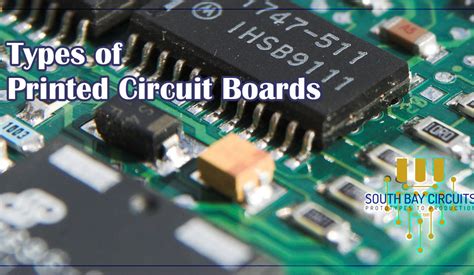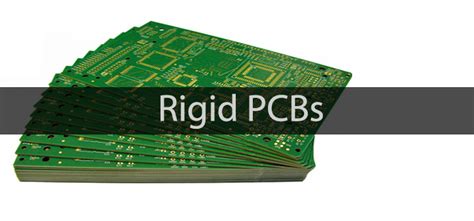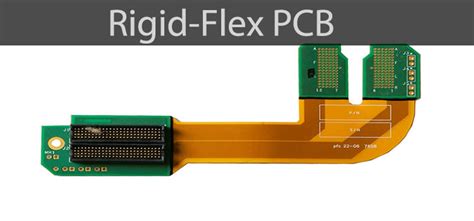Introduction to PCB Types
Printed Circuit Boards (PCBs) are the backbone of modern electronics. They provide a platform for mounting and interconnecting electronic components, enabling the creation of complex circuits and systems. PCBs come in various types, each with its own unique characteristics and applications. The three main types of PCBs are single sided, double sided, and Multilayer PCBs. In this article, we will explore these PCB types in detail, discussing their advantages, disadvantages, and common applications.
What is a Single Sided PCB?
A single sided PCB, also known as a single layer PCB, is a circuit board with conductive traces on only one side of the substrate. The substrate is typically made of a non-conductive material, such as fiberglass or phenolic resin. Single sided PCBs are the simplest and most cost-effective type of PCB, making them a popular choice for low-complexity circuits and prototypes.
Advantages of Single Sided PCBs
- Low cost: Single sided PCBs are the most affordable type of PCB due to their simple design and manufacturing process.
- Easy to design: With only one layer of conductive traces, single sided PCBs are relatively easy to design and layout.
- Quick turnaround time: Single sided PCBs can be manufactured quickly, making them ideal for rapid prototyping and short production runs.
Disadvantages of Single Sided PCBs
- Limited complexity: Single sided PCBs are not suitable for complex circuits with a large number of components and interconnections.
- Low component density: The single layer design limits the number of components that can be accommodated on the board.
- Prone to electromagnetic interference (EMI): Single sided PCBs are more susceptible to EMI due to the exposed traces on the surface.
Applications of Single Sided PCBs
- Simple electronic devices, such as calculators and remote controls
- Low-cost consumer electronics
- Educational and hobby projects
- Prototyping and testing of simple circuits

What is a Double Sided PCB?
A double sided PCB, also known as a two-layer PCB, has conductive traces on both sides of the substrate. The two layers are interconnected using plated through-holes (PTHs), which are small holes drilled through the board and plated with a conductive material. Double sided PCBs offer increased complexity and component density compared to single sided PCBs, making them suitable for a wider range of applications.
Advantages of Double Sided PCBs
- Increased complexity: Double sided PCBs can accommodate more complex circuits and a higher number of components compared to single sided PCBs.
- Better signal integrity: The use of PTHs allows for shorter signal paths, reducing signal distortion and improving overall signal integrity.
- Improved EMI performance: Double sided PCBs offer better EMI shielding due to the ground plane on one side of the board.
Disadvantages of Double Sided PCBs
- Higher cost: Double sided PCBs are more expensive to manufacture than single sided PCBs due to the additional processing steps required.
- Longer design time: Designing a double sided PCB is more complex and time-consuming than designing a single sided PCB.
- Increased manufacturing complexity: The drilling and plating of PTHs add complexity to the manufacturing process, potentially increasing lead times.
Applications of Double Sided PCBs
- Intermediate-complexity electronic devices, such as power supplies and amplifiers
- Automotive electronics
- Industrial control systems
- Telecommunications equipment

What is a Multilayer PCB?
A multilayer PCB is a circuit board with three or more layers of conductive traces. These layers are separated by insulating materials and interconnected using PTHs. Multilayer PCBs offer the highest level of complexity and component density among the three main types of PCBs, making them suitable for the most demanding applications.
Advantages of Multilayer PCBs
- High complexity: Multilayer PCBs can accommodate highly complex circuits with a large number of components and interconnections.
- Excellent signal integrity: The use of multiple layers allows for the creation of dedicated signal, power, and ground planes, minimizing signal distortion and crosstalk.
- Compact design: Multilayer PCBs enable the creation of compact, high-density designs, saving space and reducing overall system size.
Disadvantages of Multilayer PCBs
- High cost: Multilayer PCBs are the most expensive type of PCB due to the complex manufacturing process and the use of advanced materials.
- Long design time: Designing a multilayer PCB is a complex and time-consuming process, requiring specialized skills and tools.
- Longer lead times: The manufacturing of multilayer PCBs involves multiple processing steps, resulting in longer lead times compared to single sided and double sided PCBs.
Applications of Multilayer PCBs
- High-performance computing systems
- Aerospace and defense electronics
- Medical devices
- Smartphones and tablets
- High-speed networking equipment

Comparison of PCB Types
| Characteristic | Single Sided PCB | Double Sided PCB | Multilayer PCB |
|---|---|---|---|
| Complexity | Low | Medium | High |
| Cost | Low | Medium | High |
| Design Time | Short | Medium | Long |
| Manufacturing Time | Short | Medium | Long |
| Component Density | Low | Medium | High |
| Signal Integrity | Low | Medium | High |
| EMI Performance | Low | Medium | High |
Choosing the Right PCB Type
When selecting the appropriate PCB type for your project, consider the following factors:
-
Circuit complexity: Assess the complexity of your circuit and the number of components required. Single sided PCBs are suitable for simple circuits, while double sided and multilayer PCBs are better suited for more complex designs.
-
Cost: Determine your budget and the expected production volume. Single sided PCBs are the most cost-effective option, while multilayer PCBs are the most expensive.
-
Performance requirements: Consider the signal integrity and EMI performance requirements of your application. Multilayer PCBs offer the best performance in these areas, followed by double sided PCBs.
-
Size constraints: Evaluate the space constraints of your application. Multilayer PCBs enable the creation of compact, high-density designs, while single sided PCBs require more space.
-
Time-to-market: Consider the design and manufacturing lead times for each PCB type. Single sided PCBs offer the shortest lead times, while multilayer PCBs have the longest.
Frequently Asked Questions (FAQ)
- What is the difference between a single sided and a double sided PCB?
-
A single sided PCB has conductive traces on only one side of the substrate, while a double sided PCB has traces on both sides, interconnected using plated through-holes (PTHs).
-
Can a single sided PCB have components on both sides?
-
Yes, a single sided PCB can have components on both sides, but the traces will only be on one side. Components on the non-trace side must have their leads soldered directly to the traces on the opposite side.
-
What is the purpose of using multiple layers in a multilayer PCB?
-
Multiple layers in a multilayer PCB allow for the creation of dedicated signal, power, and ground planes, improving signal integrity and reducing electromagnetic interference (EMI). They also enable the creation of more complex circuits and higher component density.
-
Are multilayer PCBs more durable than single sided or double sided PCBs?
-
Multilayer PCBs are generally more durable than single sided or double sided PCBs due to their increased thickness and the use of advanced materials. However, the durability of a PCB also depends on factors such as the quality of the manufacturing process and the operating environment.
-
Can I convert a single sided PCB design to a double sided or multilayer PCB?
- In most cases, converting a single sided PCB design to a double sided or multilayer PCB requires significant changes to the layout and routing. It is usually more efficient to start with a new design that takes advantage of the benefits offered by double sided or multilayer PCBs.
Conclusion
Single sided, double sided, and multilayer PCBs each have their own advantages, disadvantages, and applications. Single sided PCBs are the most cost-effective and simplest to design, making them suitable for low-complexity circuits and prototypes. Double sided PCBs offer increased complexity and improved signal integrity, making them a good choice for intermediate-complexity applications. Multilayer PCBs provide the highest level of complexity, signal integrity, and component density, but at a higher cost and with longer lead times.
When choosing the right PCB type for your project, consider factors such as circuit complexity, cost, performance requirements, size constraints, and time-to-market. By understanding the characteristics and trade-offs of each PCB type, you can make an informed decision that best meets the needs of your application.
As technology continues to advance, the demand for more complex and high-performance electronic devices will drive the development of new PCB technologies and manufacturing processes. However, the fundamental principles and trade-offs associated with single sided, double sided, and multilayer PCBs will remain relevant for the foreseeable future.

Leave a Reply